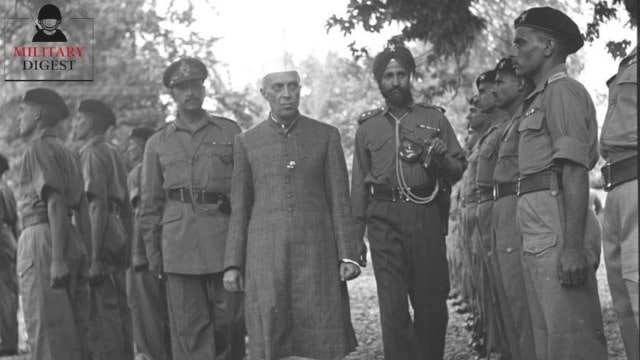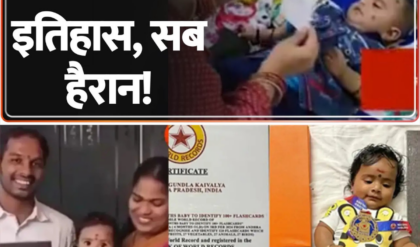In 1952, an expert committee consisting of officers from the three Services and eminent educationists was formed as part of the policy to introduce Hindi as the official language.
Recently, the Indian Army, Navy, and Air Force have focused strongly on eliminating colonial practices and legacies. At each biannual commanders’ conference, at least one suggestion is made in this regard. However, not much is known about the strenuous efforts made in the years following Independence to establish a new identity for the Indian military and move away from the influence of colonial rule.
This week, we will look at how the Indian Army consistently made efforts immediately after the country became a Republic in 1950 to propagate Hindi as the official language in the Service. The British had left behind an anglicised officer class, but it is to the credit of these officers that once the colonial tag of dominion had been shed, they lost no time in ensuring that the Indian Army got as much ‘Indian’ as it could at the time.

Prime Minister Jawaharlal Nehru inspecting Army troops in Srinagar soon after Independence. (Photo: Wikimedia Commons)
Hindi as medium of instruction
In 1951, the Government of India introduced Hindi in the Devnagari script as the medium of instruction in the Armed Forces. From March 1, 1951, the Army Education Corps Centre and School began holding special courses to teach Hindi to all Corps personnel and unit instructors.
It was decided that all regular officers in the Army would have to pass a compulsory test in Hindi by July 1, 1952, while all ranks would learn the Devnagari script by September 30, 1952. After October 1, 1956, all Army educational Certificate examinations were to be held in Hindi in the Devanagari script.
It was also decided that Hindustani in the Devnagari script would continue to be used during the transitional period. In the case of the Navy, it was decided to start Hindi examinations in 1952, and officers were asked to pass these examinations by 1953 at the latest. Examinations for naval ratings were to begin later. Air Force officers were also required to pass a compulsory test in Hindi by October 1952.
The same year, it was decided that all future training publications would be published in English and Hindustani in the Devanagari script until a Hindi lexicon was ready. The existing Roman Urdu pamphlets were rewritten in the Devanagari script.
Changeover of basic words of command to Hindi
The first phase of work to change the basic words of command in the Army from English to Hindi was completed in 1954. In 1952, in pursuance of the policy to introduce Hindi in the armed Services, an experts’ committee for defence terminology was constituted at Army headquarters. It consisted of officers from the three Services and eminent educationists. Hindi scholars were also co-opted from time to time. The committee thoroughly searched for Hindi equivalents for general defence terms and a vocabulary relating to Army drill.
Two lists of Hindi equivalents of selected Service terms were compiled and circulated to the units of all three Services throughout the country. Then, their suggestions and comments were forwarded to the defence headquarters.
One list consists of nearly 750 general Army terms and terms peculiar to the three Services’ different arms, and the second list contains almost 160 basic command words for the Armed Forces.
Difficulties faced by the Hindi committee
The task of coining suitable Hindi words was challenging, as the Armed Forces are a relatively modern institution in India, leaving limited scope for selection from ancient words.
Drill movements had also evolved under the influence of modern military techniques, and there were no past traditions to fall back upon.
The committee had to break completely new ground. In the matter of the selection of suitable terms, phonetic considerations had been of primary importance. As these are meant to be spoken out loudly from a considerable distance, they had to undergo rigid physiological tests.
Regarding words of command, the committee tried to find words and phrases that would express various drill movements as fully as possible.
For example, in selecting suitable words of drill command, the committee, as far as possible, selected bisyllabic words with long vowels in both syllables in view of the inherent suitability of such terms for being shouted aloud. A specific example of such a choice is “Savadhan” for “Attention”.
Considering the linguistic character and level of language learning in the defence Services, the committee had to make the Hindi terminology broad-based, simple, and intelligible. Sometimes, suitable Sanskrit “Tatsama” (meaning ‘same as that’) was selected because it was already in use in the language.
A significant number of commonly used English words, which have been integrated into everyday language due to their long-standing usage, and those that represent specific concepts that are difficult to translate into Hindi, were preserved at that time. Examples are “march”, “rifle”, “line” etc.
News
REPORT | OMG ! Salman Khan BIG Reaction on Aishwarya Rai & Abhishek banchan Divorce
OMG ! Salman Khan BIG Reaction on Aishwarya Rai & Abhishek banchan Divorce . . . Salman Khan’s Response to Rumors of Aishwarya and Abhishek’s Divorce Sparks Debate Recently, speculation around Bollywood actors Aishwarya Rai and Abhishek Bachchan’s marriage has…
REPORT | Aishwarya Rai’s BIG statement on ‘Curse’ goes viral amidst divorce rumours with Abhishek Bachchan
Aishwarya Rai’s BIG statement on ‘Curse’ goes viral amidst divorce rumours with Abhishek Bachchan . . . Aishwarya Rai and Abhishek Bachchan: Debunking Rumors and Celebrating a Bollywood Love Story Aishwarya Rai and Abhishek Bachchan, one of Bollywood’s most iconic…
REPORT | Amitabh Bachchan’s OLD post wishing Aishwarya Rai goes VIRAL amid her divorce rumours with Abhishek
REPORT | Amitabh Bachchan’s OLD post wishing Aishwarya Rai goes VIRAL amid her divorce rumours with Abhishek . . . Amitabh Bachchan’s Old Tweet for Aishwarya Goes Viral Amid Silence on Her Birthday On November 1, fans noticed a notable…
Huge Fight Between Alia Bhatt and Sasu Maa Neetu Kapoor Over Ranbir Kapoor!
Huge Fight Between Alia Bhatt and Sasu Maa Neetu Kapoor Over Ranbir Kapoor . . . Recent reports suggest that tensions have escalated between Alia Bhatt and her mother-in-law, Neetu Kapoor, in a dramatic showdown over Ranbir Kapoor. The conflict,…
Alia Bhatt & Neetu Kapoor Fight : Neetu Kapoor’s SHOCKING Fight With Alia Bhatt
Alia Bhatt & Neetu Kapoor Fight : Neetu Kapoor’s SHOCKING Fight With Alia Bhatt . . . The relationship between Alia Bhatt and Neetu Kapoor has always been closely observed by fans and the media, especially after Alia married Neetu’s…
REPORT| Abhishek Bachchan संग Affair की खबरों पर Nimrat Kaur ने ये क्या कहा? Aishwarya Rai देंगी Divorce?(VIDEO)
Abhishek Bachchan संग Affair की खबरों पर Nimrat Kaur ने ये क्या कहा? Aishwarya Rai देंगी Divorce? . . . . . Abhishek Bachchan and Nimrat Kaur: Rumors, Reactions, and Reality Behind the Headlines In recent days, social media has…
End of content
No more pages to load











